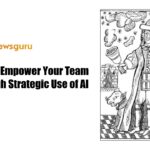Vector databases have emerged as a crucial component in the development and enhancement of generative artificial intelligence (GenAI) applications, especially since the rise of large language models (LLMs) like ChatGPT. While the concept of vector databases predates these advancements, their ability to address key limitations of LLMs—such as hallucinations and lack of long-term memory—has positioned them as an indispensable element in the GenAI technology stack.
At their core, vector databases store and provide access to both structured and unstructured data, including text and images, alongside their vector embeddings. These embeddings are numerical representations that encapsulate the semantic meaning of the original data objects, typically generated by machine learning models. The proximity of similar objects in vector space allows for the calculation of their similarity based on the distance between their vector embeddings. This paves the way for vector search, a technique that retrieves objects based on similarity rather than traditional keyword-based methods, offering a more flexible and nuanced search experience.
Vector databases excel in conducting rapid, large-scale vector searches due to their AI-native design. Traditional databases can store vector embeddings, but they are not optimized for the computationally intensive task of vector search. Vector databases leverage vector indexing to pre-calculate distances, enabling faster retrieval at query time. This capability is critical for applications requiring quick access to similar objects, making vector databases essential for production environments where speed and scale are paramount.
The utility of vector databases extends beyond traditional search applications. With the advent of LLMs, vector databases have demonstrated their ability to enhance LLM capabilities by serving as an external memory. Enterprises are increasingly deploying customized chatbots for customer support or as technical and financial assistants. For these conversational AIs to be effective, they must generate coherent language, maintain state to hold a conversation, and query factual information beyond their initial training data. While LLMs can handle language generation, they require support for memory and factual accuracy—areas where vector databases shine.
Vector databases can provide state to stateless LLMs by allowing dynamic updates to their stored information. This capability ensures that the AI can “remember” previous interactions and adapt its responses accordingly. Additionally, vector databases can act as external knowledge repositories, mitigating the issue of hallucinations—where LLMs generate inaccurate information—by retrieving relevant factual data and incorporating it into the AI’s context. This approach, known as retrieval-augmented generation (RAG), significantly enhances the reliability and accuracy of the AI’s output.
Rapid prototyping is another area where vector databases prove invaluable. In fast-paced environments, the ability to quickly test new ideas and iterate on them is crucial. Vector databases facilitate this by offering straightforward setup processes and automatic vectorization of data, eliminating the need for extensive boilerplate code. For instance, Weaviate—a prominent open-source vector database—allows developers to connect to their database instance, integrate embedding models, and populate data collections with minimal effort. This ease of use accelerates the development cycle, enabling developers to focus on refining their GenAI applications rather than getting bogged down in setup and configuration.
Moreover, vector databases support sophisticated search capabilities that combine both vector and keyword-based searches. This hybrid approach enhances search results by leveraging the strengths of both methods. For example, Stack Overflow has successfully implemented hybrid search with Weaviate to improve user experience and search accuracy.
As GenAI applications transition from prototype to production, several considerations come into play, including scalability, deployment, and data protection. Production environments often require handling vast amounts of data, necessitating vector databases that can scale horizontally to accommodate billions of data objects. Vector indexing techniques, such as hierarchical navigable small world (HNSW) algorithms, enable these databases to perform lightning-fast searches even with extensive datasets. Deployment flexibility is also critical, with options ranging from managed services and cloud deployments to self-hosted solutions on Kubernetes or Docker Compose.
Data protection and regulatory compliance are paramount, particularly in sensitive applications. Vector databases must offer robust access management and resource isolation to ensure that data is handled securely and in accordance with regulations like GDPR. Weaviate, for instance, employs a multi-tenancy concept to meet these requirements, safeguarding user data and maintaining compliance.
In essence, vector databases play a pivotal role in advancing the capabilities and reliability of GenAI applications. By enhancing search, supporting memory and factual accuracy in LLMs, and enabling rapid prototyping, they address key challenges faced by developers and enterprises alike. As these applications move from prototype to production, vector databases provide the necessary scalability, deployment flexibility, and data protection to ensure successful implementation and operation.











